LSI Keywords, or Latent Semantic Indexing Keywords, play a crucial role in SEO by helping search engines understand the context and relevance of your content. Rather than focusing solely on single keywords, LSI Keywords allow you to build a more natural, comprehensive approach to optimization. By including related terms and phrases, your content can better match the search intent of users, increasing the chances of ranking higher on search engine results pages.
At OctopusWriters, we recognize the power of LSI Keywords to improve organic search visibility. Our team not only uses targeted LSI Keywords to help content perform better but also crafts content strategies that adapt to changes in search algorithms. By focusing on relevancy and context through LSI Keywords, we create content that resonates with both users and search engines, ultimately driving traffic and enhancing brand visibility.
What are LSI Keywords?
LSI keywords are defined as terms that are semantically related to your primary keyword, though they are not exactly synonyms. Unfortunately, many people mistakenly think of LSI keywords as synonyms. In reality, these keywords are grouped together because they share contextual relevance, not because they mean the same thing literally.

What are LSI Keywords?
For example, consider the keyword “Apple.” Depending on the context, it can refer to either a type of fruit or a major American tech company. Search engines like Google look for various LSI keywords to determine the intent behind a search query. Here are two possible scenarios:
If Google detects words like pie, juice, milkshake, food, fruit, and farm, it will likely interpret the page as discussing the apple fruit. Alternatively, if it identifies terms like iTunes, iPad, iPhone, Mac, Mac OS, MacBook, and iPod, it will likely assume the page is about the tech brand Apple. Similarly, if you search for “Cooper,” Google will analyze associated LSI keywords to understand whether you’re interested in footwear (Lee Cooper), a car model (Mini Cooper), or the fictional character Sheldon Cooper from The Big Bang Theory.
Now that we have a better grasp of what Latent Semantic Indexing is and how LSI keywords function, let’s dive into how they can be leveraged to boost SEO rankings.
Does Google Use LSI in Their Algorithm?
Google does not use LSI keywords in its ranking algorithms, so they are not a ranking factor.
In 2019, Google representative John Mueller clarified, “There’s no such thing as LSI keywords – anyone who’s telling you otherwise is mistaken, sorry.” Instead of relying on a set of related words, Google employs a more sophisticated approach to understanding a page’s relevance by analyzing the content holistically to determine its primary topic.
Though “LSI keywords” is technically a misnomer, many SEO professionals still refer to including related terms and phrases on a page as “adding LSI keywords.”
Google likely does consider these non primary keyword terms in evaluating and ranking content. So, for SEO purposes, incorporating related terms can still be beneficial for relevance and ranking whether or not they are labeled as “latent semantic indexing keywords.”
Why are LSI keywords important?
LSI keywords play a crucial role in helping search engines grasp the overall topic of a website or a specific page.
In the past, search engine crawlers identified a page’s topic primarily by detecting keywords within the content. If a crawler frequently encountered the term “sneakers” on a page, it would conclude that the page was about sneakers based on simple keyword matching. This reliance on keyword density was a fundamental aspect of early SEO.
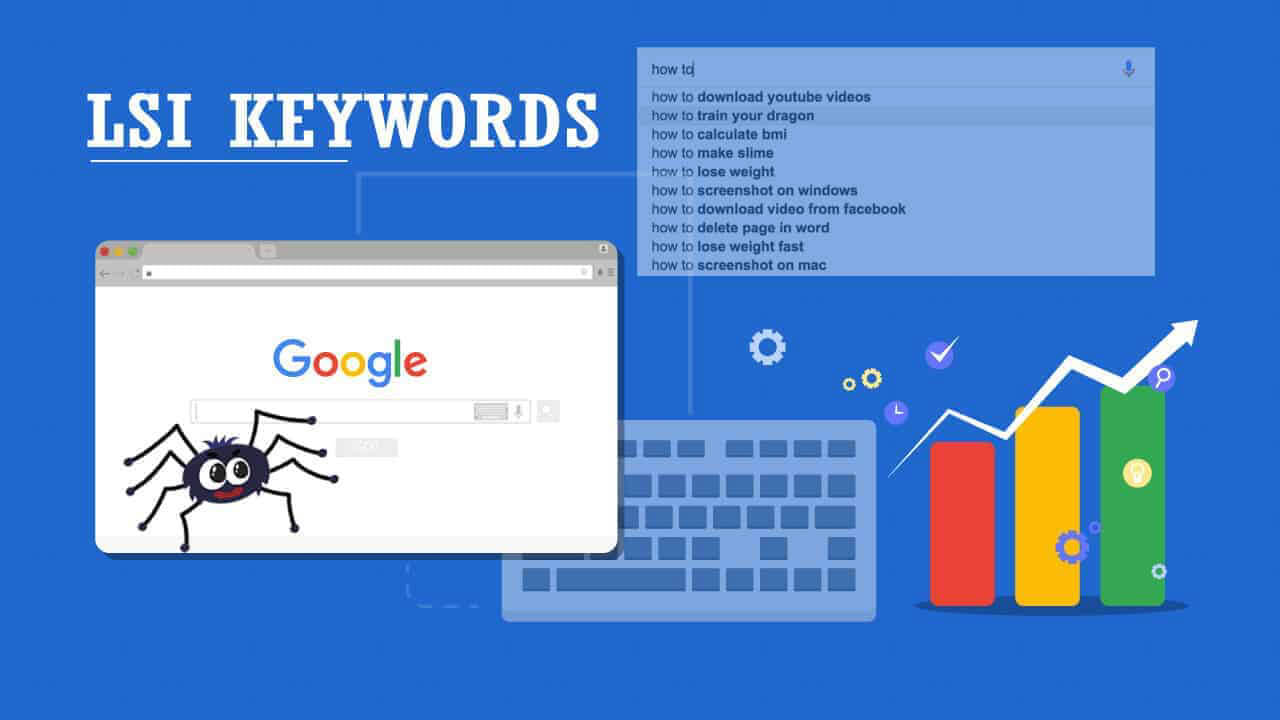
Why are LSI keywords important?
However, search engines have evolved significantly. Now, instead of focusing solely on primary keywords, they analyze contextually related words to better understand a page’s subject and relevance to user queries.
Let’s revisit our earlier example: a page about sneakers.
Today, Google and other search engines won’t just search for the term “sneakers” alone. They’ll also look for contextually relevant words, like “Nike’s shoes,” “Jordans,” or “Adidas,” to understand the topic more thoroughly.
Beyond improving search rankings, LSI keywords offer additional benefits:
- Enhancing content credibility: Adding related terms to your post makes it sound more natural and relevant, increasing the likelihood that people will read, engage with, and share it, thereby boosting its credibility.
- Increasing on-site browsing time: Semantically connected words enrich the quality of content, which may motivate visitors to explore other pages on the site.
- Reducing bounce rates: Content that includes relevant terms appeals more precisely to the intended audience, potentially decreasing bounce rates by keeping the right readers engaged.
How to Find LSI Keywords
You can identify LSI keywords by brainstorming your topic and thinking about other related words and phrases. Alternatively, you can simplify the process by using specialized tools.
Here are some straightforward methods for discovering LSI keywords:
Google Autocomplete
Google Autocomplete is a quick and efficient tool for discovering related terms to integrate into your content.
Using tools like this can yield far more keyword suggestions than traditional methods.
Since Google often suggests the most popular (and therefore highly relevant) terms first, I tend to use these tools primarily when aiming to fully optimize my content.
Related Searches
“Related Searches” functions similarly to Google Autocomplete.
However, rather than suggesting keywords while you type, Google presents related terms at the bottom of the search results page. It’s straightforward but effective.
Bold Terms in Google Snippet Descriptions
Here’s another method to find related words and phrases directly from Google.
You may have observed that Google highlights terms in meta descriptions and featured snippets that align with your keyword. If you pay attention, you’ll notice something interesting:
Google doesn’t just highlight the exact words you searched for; it also bolds similar terms and phrases.

Bold Terms in Google Snippet Descriptions
Google Keyword Planner
The Google Keyword Planner remains one of my go-to tools for keyword research. Not only does it provide keyword ideas, but it’s also useful for discovering terms related to your target keyword.
For instance, if you enter “SEO Tools” into the tool, it generates a list of keyword ideas. While some are simply synonyms or variations, a deeper dive can reveal unique phrases that may be hard to find elsewhere.
You don’t have to enter a specific keyword either; you can use a landing page as input. By using a competitor’s landing page that ranks higher in search results, Google will analyze the page and generate keywords relevant to its topic.
Google Image Tags
There’s a feature within Google Images that doesn’t get much attention, but it’s incredibly valuable when it comes to finding related terms.
It’s an often-overlooked tool that can provide a wealth of keyword ideas. To use it, simply enter your target keyword into Google Images. The results won’t just show you images; they also offer suggestions for terms and phrases that are contextually linked to your keyword. This can be a goldmine for uncovering semantically related words that can enhance your content and SEO strategy.
How to use LSI keywords for SEO
The keyword research tools previously mentioned will generate an extensive list of relevant LSI keywords for your content. Now, it’s time to incorporate these terms into your content and reap the key SEO advantages.

How to use LSI keywords for SEO
Choose LSI keywords best suited for your topic
Before integrating LSI keywords into your content, it’s important to select the ones most relevant to your topic. For example, if you’re writing a blog post focused on the main keyword “blog SEO,” the tool you’re using might generate a long list of keyword suggestions, such as:
- Blog SEO checklist
- SEO blog topics
- Blog post SEO tips
- SEO blogs for beginners
- What are the advantages of SEO?
- SEO blog meaning
- SEO plugins for bloggers
- How to write SEO-friendly posts
- Blog SEO for beginners
- SEO latest trends
- How to optimize your post for SEO
…and so on.
As you can see, many of these terms are useful, depending on your context.
If you were crafting a post for WordStream on the benefits of blog SEO, you’d pair the primary keyword “blog SEO” with phrases like “what are the advantages of SEO” and “blog SEO for beginners.”
Alternatively, if the post were about various ways to optimize blog SEO, you’d select LSI keywords like “how to optimize your post for SEO” and “X blog post SEO tips.”
Look at the total monthly search estimate
Choosing the right LSI keywords for your content can sometimes be challenging, especially when certain suggestions seem to point toward a completely different topic.
For instance, if you’re writing about “online course platforms,” you might receive LSI keyword suggestions like “online course learning platforms.”
In these cases, you’ll need to assess whether the suggested keyword would be better suited for a separate article or if it should be incorporated into your original piece. Personally, I often look at the monthly search volume to help me decide whether it’s worth creating a new post or integrating the term into the current one. The keywords provided by your tool can serve different purposes, and it’s important to evaluate which ones will best complement the page you’re working on.
If you encounter keywords that don’t quite fit your current content, it’s still helpful to note them for future use on other pages, ultimately enhancing the SEO across your website.
Add LSI keywords to your page
You should incorporate your LSI keywords in the same key areas where your primary keyword appears, such as:

Add LSI keywords to your page
- Meta title and description
- Headings (H1, H2, H3)
- Image alt tags
- The body text
Be sure to naturally blend these related terms throughout your content. This approach not only diversifies your keyword usage but also expands your SEO potential, as overusing the main keyword in every critical section of your page can appear unnatural.
Focus on user experience
Be cautious not to overuse LSI keywords in your content. Even though they are not your primary keywords, it’s easy to go overboard, and excessive use can lead to penalties. The goal is to use enough relevant terms to help search engines like Google understand the context of your page, without disrupting the readability or flow of the content for your audience.
To achieve this balance, incorporate related keywords in a way that feels natural and cohesive, ensuring the content remains easy to follow. This strategy will not only help you avoid penalties but also enhance the reader experience, which can ultimately lead to greater success in blogging and monetization.
Are LSI keywords important for SEO?
There are multiple reasons why LSI keywords hold little significance for Google and other search engines.

Are LSI keywords important for SEO?
LSI is from the 1980s
Latent Semantic Indexing (LSI) represents just one approach to language modeling based on semantic relationships, and it doesn’t encompass the entire field of language understanding. Developed by Susan Dumais, who patented Latent Semantic Analysis (LSA) in 1989, LSI was designed well before the advent of the internet in 1991. The patent outlines a use case for LSI in analyzing a limited set of static documents, which makes it unsuitable for managing the vast and constantly changing landscape of information found on the modern web.
LSI Keywords aren’t patented
Since the LSI patent was granted in 1989 and U.S. patents typically last for twenty years, Google would have had to wait until 2009 to legally incorporate LSI technology into its search algorithms. For a search engine founded in 1998, waiting over a decade to utilize this method would have been far from practical.
Google uses modern technology
A patent granted to Google in 2017 disclosed that the search engine leverages a Word Vector-based approach to interpret content. In contrast, LSI methods were developed before the World Wide Web even existed, making them less applicable to today’s advanced search technologies.
LSI keywords don’t follow SEO guidelines
Tools promoting LSI keywords can lead to keyword stuffing by encouraging the addition of related terms directly from a list. This outdated “black hat” technique risks penalties and may cause rankings to drop.
LSI keywords and semantically related keywords
While the core ideas of semantic relevance are crucial for contextualizing content today, it’s clear that search engines do not actually employ latent semantic indexing (LSI). As SEO expert Bill Slawski has pointed out, LSI is more like an early influence on the evolution of search engine technology than a direct tool for modern content optimization.
Currently, satisfying search intent and content relevance are key factors in search engine algorithms. Incorporating related phrases and keyword variations aids search engines in establishing logical connections and in accurately grasping a page’s context.
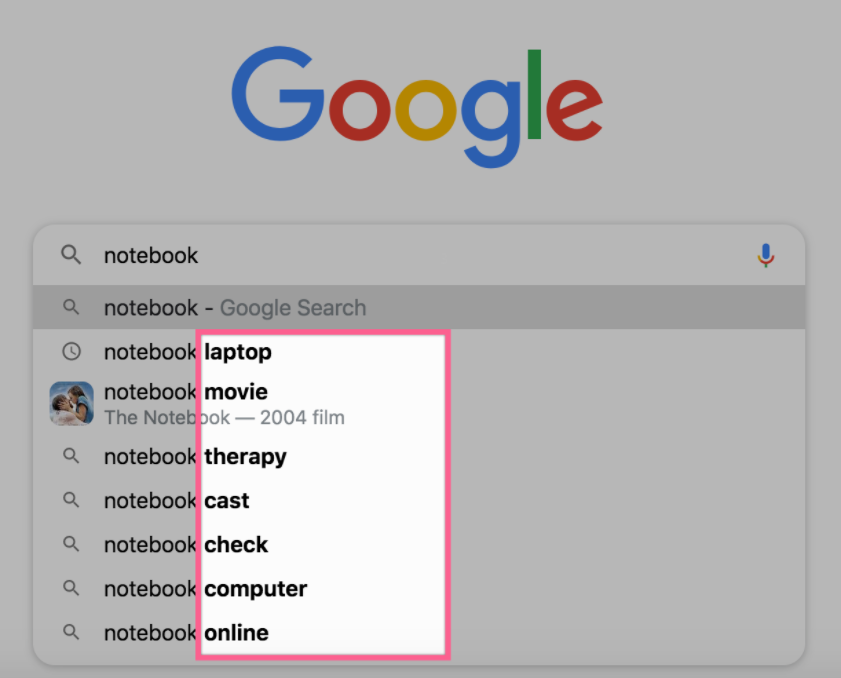
LSI keywords and semantically related keywords
Rather than focusing on LSI keywords, you should prioritize using semantically related terms in your content. Google’s extensive research into phrase-based indexing supports this approach, as it helps search engines interpret keywords in context. For instance, Google’s context-vector patents illustrate how it discerns the intent behind ambiguous search terms. If your content references “Philadelphia,” including terms like “NFL,” “mascot,” or “head coach” signals that your page is about the Philadelphia football team rather than the city or a food brand.
Google has openly invested in natural language processing to decode the semantics of search queries. Bill Slawski emphasizes that while Google values synonyms and semantics, it does not employ LSI. For SEOs, using the term “LSI keywords” can lead to confusion, as there’s no actual mechanism or patent behind so-called LSI keywords. Instead, focus on crafting content that naturally integrates semantically relevant terms, enhancing both relevance and readability without the outdated idea of LSI keywords.
How to correctly use LSI keywords for SEO
Now that we understand the goal is to use semantically related words instead of LSI keywords, there are multiple strategies to find them. The most effective method is to let Google reveal relevant terms directly.
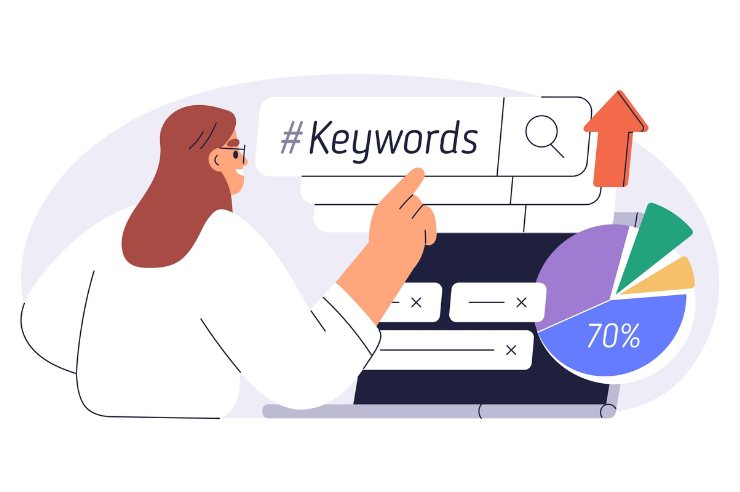
How to correctly use LSI keywords for SEO
However, there are also additional techniques to uncover related keywords connected to your main topic. Here are some of the best methods for finding semantically related phrases to enhance the content on your website.
Analyze the top-ranking pages
The clearest indication of what Google values in search content can be observed by examining the top-ranking pages for your target keywords. By reviewing these top results, you can identify common patterns in keyword usage and related terms, which can then guide your own content to better match Google’s understanding of relevant topics. However, this manual approach to keyword research can be time-consuming. To streamline the process, SEO tools can quickly analyze keywords and generate insights on a larger scale.
To discover related keywords for a new blog post efficiently, here’s a step-by-step guide using Surfer’s Content Editor:
- Open Surfer’s Content Editor tool.
- Input the primary keyword for your content.
- Specify your target audience’s location and device type.
- Click on “Create Content Editor” to generate your workspace.
- If you want to optimize an existing post, toggle the option to import content directly from a URL.
Once the editor has processed your keyword, select the green-checked result. Click on the gear icon to customize the search parameters. This lets you select top-ranking competitor pages for the chosen keyword. In the “Competitors” tab, you can toggle specific pages to include or exclude in your analysis. For example, if a result is a glossary entry that doesn’t match your content’s purpose, you may want to exclude it.
With selected pages set, Surfer’s Content Editor uses natural language processing (NLP) to identify highly relevant terms and suggests optimal keyword frequencies. Aiming for a content score above 75 will ensure your content aligns well with semantically related terms, helping search engines categorize your page accurately.
Identify missing keywords
To make your content more attractive to search engines, it’s beneficial to identify any missing keywords that might improve relevance and discoverability, particularly focusing on semantically related terms or “LSI Keywords.” Here’s how to use Surfer’s Audit tool to find and implement these enhancements effectively:
- Open Surfer Audit: Enter the URL of your existing page along with your primary keyword.
- Adjust Preferences: Choose the country and device options that best fit your target audience. Additionally, select “Sentiment” to get a sense of the overall tone in top-ranking pages.
- Generate Audit Report: Click “Create Audit,” which will produce an overview of your content’s SEO standing.
- Select Competitors: In the report, use the “Select competitors” button on the top right to include or exclude specific pages. For example, if you’re optimizing for a tool-related topic, exclude branded or sales pages that may not align with general content. Similarly, avoid e-commerce listings unless they directly relate to your keyword goals.
- Analyze Terms to Use: After updating your competitor list, go to the “Terms to Use” section to review keyword recommendations. Sort the “Action” column to prioritize the most impactful terms.
- Implement Recommendations: Integrate relevant keywords throughout your content, considering recommended frequency ranges. For instance, if a term like “web pages” is suggested, include it in a natural way that enhances readability and relevance.
By following these steps, you can align your content with the terms and concepts most valued by search engines, enhancing both relevance and authority on your topic.
Browse the SERPs
To ensure that you’re covering all semantically related terms, it’s helpful to examine the SERPs (Search Engine Results Pages) when taking a manual approach to discovering relevant keyword ideas associated with “LSI Keywords.”
As Bill Slawski suggests, review the top-ranking pages for common keywords that consistently appear, as these are terms Google may find essential for the context of your primary keyword. Pay close attention to any recurring phrases in search features, as these can highlight which keywords might have greater search visibility and significance for your topic.
Additionally, the “Related searches” section at the bottom of the SERPs offers potential header ideas and secondary keywords to use naturally in your content. For example, when writing about setting up Search Console, you might find “GSC installation on Shopify” among the related search terms, making it a relevant phrase to integrate. Other useful sections include “People also Ask,” which can provide subtopic ideas or semantically related terms. The knowledge graph, often visible for notable figures or well-known topics, shows key terms Google associates with the main entity. For instance, terms like “footballer,” “FIFA,” and “Brazil” are commonly linked to Brazilian legend Pele, which highlights essential terms in Google’s semantic understanding of this subject.
While Google autocomplete can occasionally offer insight, it is generally less reliable for identifying true “LSI Keywords” since suggestions may be based on past searches or partially entered queries, not necessarily semantic relevance. By combining these manual techniques with SERP analysis, you’ll develop a more complete list of terms and phrases that Google sees as relevant to your primary keyword.
Can related words boost rankings?
Most SEOs interpret “LSI Keywords” as merely related terms, phrases, and entities that can improve content relevance. Although this interpretation is technically incorrect, it’s still true that including related words and phrases can benefit SEO efforts.

Can related words boost rankings?
Why? Google hints at this by its handling of content relevance. Take, for instance, the search term “dogs.” You wouldn’t expect a quality page to repeat “dogs” over and over again. Instead, Google evaluates the broader context of a page, looking for relevant content like pictures of dogs, videos, or a list of breeds.
In this context, terms such as individual dog breeds are semantically related to the word “dogs.” This helps Google understand the page’s broader topic and improve rankings for relevant searches.
To illustrate this, imagine two pages that both mention “dogs” the same number of times. If one page also contains terms like “Golden Retriever,” “Poodle,” or “beagle,” Google will rank it higher for dog-related queries. Meanwhile, a page that mentions cats with similar frequency might not rank well for “dogs,” because it’s about a different topic altogether.
This is how Google uses related words and LSI Keywords to determine content relevance and rank pages accordingly. When you optimize your page by including semantically related terms, you’re helping Google understand the context of your content, ultimately improving its chances of ranking for the right queries.
Why Google Doesn’t Use Latent Semantic Indexing
Google does not use latent semantic indexing (LSI) because it’s an outdated technology designed for small document sets, not the vast expanse of the web. As a result, LSI keywords and LSI SEO are not strictly applicable in the modern context of search engine optimization.
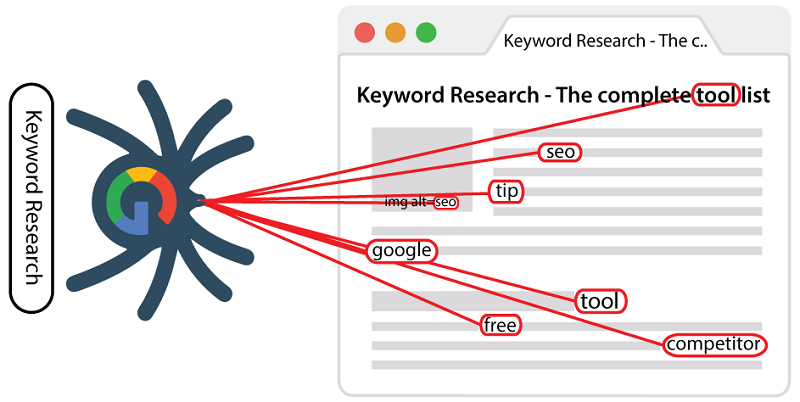
Why Google Doesn’t Use Latent Semantic Indexing
However, Google certainly values semantics in its algorithms. To better understand search intent (the user’s purpose behind the search) and the overall theme of a page, Google employs advanced semantic analysis tools rather than relying on LSI. Some of the key techniques Google uses include:
- Knowledge Graph: This is a semantic database that stores detailed information about entities (such as people, places, and things) and the relationships between them, helping Google understand content and user queries.
- Natural Language Processing (NLP): NLP allows Google to identify entities in content and search queries, enabling it to differentiate between nuances in meaning that LSI keywords cannot.
- AI and Machine Learning: Google’s AI technologies map words to concepts, helping the system understand the context of a search query or webpage as a whole, rather than just individual keywords.
For instance, Google can distinguish between “lax to nyc” and “nyc to lax,” two queries that involve similar words but represent different intents. This ability to understand context and intent goes far beyond what LSI keywords were originally designed to handle. Instead, Google uses advanced semantic technologies like the Knowledge Graph, NLP, and AI to refine its search results and better serve the needs of users.
Keyword Density
In the early days of SEO, keyword density was a primary factor in determining how well a web page ranked in search results. In simple terms, keyword density refers to the frequency at which a specific keyword or phrase appears on a web page compared to the total number of words.
For example, if a keyword appears six times in a 200-word text, the keyword density would be 3%. This metric was initially used to assess how relevant a page was to a particular search term. Naturally, pages with higher keyword density were assumed to be more relevant.

Keyword Density
However, this approach led to the problem of keyword stuffing a practice where marketers would cram their focus keywords into content excessively, often without regard for context or readability. This allowed certain web pages to rank higher despite offering little value to readers, as they were overloaded with keywords.
With the development of more sophisticated algorithms, search engines like Google shifted their focus from keyword density to the relevance and context of a page’s content. Search engines began prioritizing the quality of content over the mere frequency of keyword usage. As a result, pages engaging in keyword stuffing faced penalties, and SEO strategies began to rely more on LSI keywords related terms that help establish content’s relevance without overuse of a single keyword.
Hummingbird and Rankbrain Duo
In recent years, Google has introduced two advanced algorithms: Hummingbird and RankBrain. Hummingbird serves as the core memory system that processes search queries and analyzes web pages, including their schema, to build a comprehensive entity database. This shift means Google now ranks not just web pages but the entities (like people, places, or concepts) themselves.
On the other hand, RankBrain is the AI-powered system responsible for interpreting search queries and matching them with the entity database created by Hummingbird. RankBrain understands the intent behind a search query and uses machine learning to predict the best results. It monitors user behavior such as search activity, preferences, and time spent on various pages to refine its understanding of search intent and improve the accuracy of its results. This is where LSI keywords come into play, helping RankBrain make deeper connections between related terms and refine search outcomes by incorporating semantically related keywords.
Where Do LSI Keywords Fit In?
Without LSI keywords, search engines like Google would face difficulties understanding the relationship between search queries and the content on your site. Instead of overusing a primary keyword, integrating LSI keywords throughout your content helps search engines better comprehend the context and relevance of your page.
Although LSI keywords share similar meanings with your main keyword, they are distinct from one another. This allows you to include them more frequently in your content without risking penalties for keyword stuffing. Additionally, the use of LSI keywords enables the creation of more natural, conversational content that resonates with users. As a result, incorporating LSI keywords benefits everyone enhancing the user experience, improving the brand’s visibility, and making it easier for search engines to categorize your content accurately.
How to Choose the Best LSI Keywords
Conducting LSI keyword research is straightforward, but the real challenge lies in selecting keywords that not only have a reasonable search volume but also align closely with your content’s focus. To do this effectively, you first need to understand the searcher’s intent behind the query. Once you grasp what information they are seeking, the next step is to find keywords that naturally fit into your content while remaining highly relevant. This ensures the keywords help both your audience and search engines connect with your page’s purpose.

How to Choose the Best LSI Keywords
Intent
Users typically search with one of three main intents:
Information Seeking
In this case, users are looking to learn more about a subject. They seek general knowledge or answers to basic questions. For instance, when searching for “website,” they may want to understand what a website is and why it’s necessary.
Navigation
Here, the search query is more directed, with users aiming to find specific destinations or resources. For example, someone might search for “how to build a website on WordPress” or “best platform for e-commerce websites.”
Transactional
This intent is driven by a need to complete a particular action, such as making a purchase or hiring a service. For example, a search like “hire a web design company” indicates a user looking to engage in a transaction.
Context
To enhance your page’s visibility and ranking in the Search Engine Results Pages (SERPs), it’s essential to use LSI keywords that are closely aligned with your content. For example, if you’re offering website design and development services for small businesses, LSI keywords like “small business website design,” “affordable business website builder,” “web development services,” and “website hosting” would be highly relevant.
However, this doesn’t mean you can simply load your content with as many LSI keywords as possible. Not every related keyword will fit naturally into the text. It’s important to ensure that the terms you include make sense within the context of your content. Carefully review the text to see if the keywords flow naturally, and remove any that feel forced.
Additionally, avoid overstuffing content with too many LSI keywords, especially focusing on one specific term more than others. The key is to spread them throughout the content in a balanced way, ensuring a natural and meaningful incorporation of the keywords. This approach will help prevent penalties for keyword stuffing while maintaining the quality and relevance of your content.
Benefits of Using LSI Keywords
Using LSI keywords in content can provide numerous advantages for both SEO and user experience.

Benefits of Using LSI Keywords
Higher Search Engine Rankings
The main goal of a search engine is to deliver content that is both relevant and valuable to users. By incorporating LSI keywords, your content becomes more aligned with related topics, increasing its relevance and value. As a result, your website’s rankings are likely to improve for searches related to the primary keyword, even if they involve semantically connected terms.
Increased Content Credibility
As your content remains both relevant and up-to-date, it is more likely to attract readers and be shared across platforms. Over time, this increases its credibility and authority. This sets your content apart from the majority of average articles, which often saturate the web, making it more visible and engaging to your audience.
Improved On-Site Browsing Time
High-quality content encourages visitors to spend more time on your site and explore additional pages. The use of a natural, conversational tone, enhanced by LSI keywords, helps maintain audience engagement. This approach makes your content more relatable and keeps users interested, ensuring they remain on your site longer and interact with more of your content.
Decreased Bounce Rates
Content optimized with LSI keywords is highly focused and effectively connects with the intended audience. This targeted approach improves user engagement and helps lower bounce rates, creating a more enjoyable user experience. As a result, this positively impacts SEO, contributing to better rankings and overall content performance.
Are LSI keywords the same as synonyms?
Not all synonyms are considered LSI keywords, although some may overlap. LSI keywords are more than just synonyms they are words and phrases that are contextually related to the primary keyword. For instance, while “coat” may be a synonym for “jacket,” LSI keywords for “jacket” would be terms like “reversible,” “winter,” “feather down,” “warm,” “padded,” or “puffer,” which describe specific features or types of jackets.
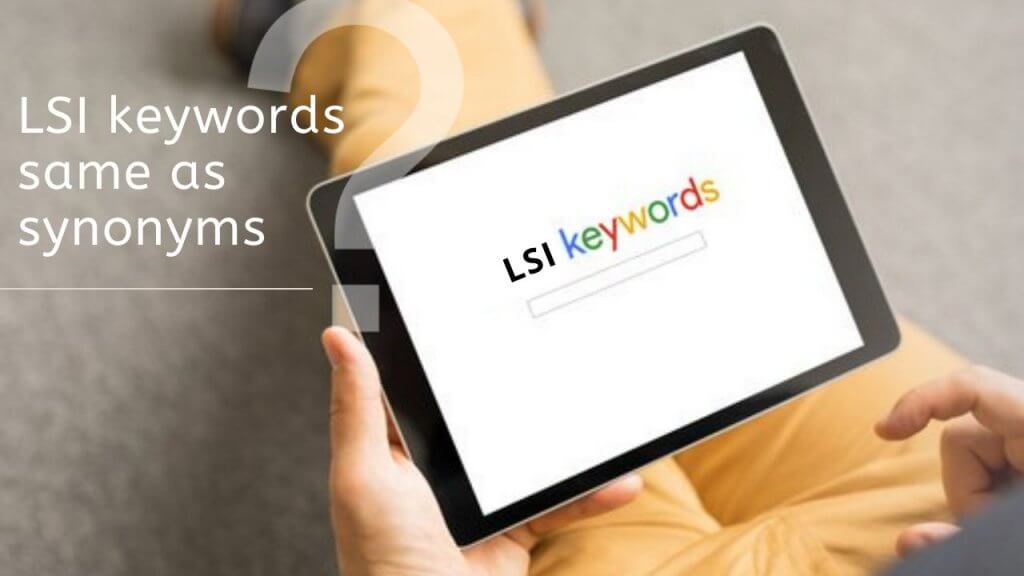
Are LSI keywords the same as synonyms?
To better understand the distinction, you can perform a Google search. The related suggestions that appear in the drop-down menu are typically examples of LSI keywords. These suggestions reflect terms that are semantically related and help search engines understand the broader context of your content.
Do LSI keywords have any disadvantages?
While LSI keywords offer many benefits, the indexing method they rely on does come with certain drawbacks. For example:
- It doesn’t take into account the sequence in which words appear and omits prepositions and conjunctions.
- It assumes that each word only has a single meaning.
- It struggles to recognize nuances like irony or underlying themes, meaning that the interpretation of words might not always align with the true meaning of the content.
These limitations can impact how well LSI keywords fully capture the meaning of complex or nuanced texts.
When did LSI keywords become relevant?
LSI keywords gained significance in 2004 when Google integrated latent semantic indexing into its search algorithm. This update was designed to help the search engine provide more accurate and relevant results to users. Google’s focus expanded beyond just keywords; it also aimed to understand anchor text in hyperlinks and the structure of interconnected websites, often referred to as SEO neighborhoods.
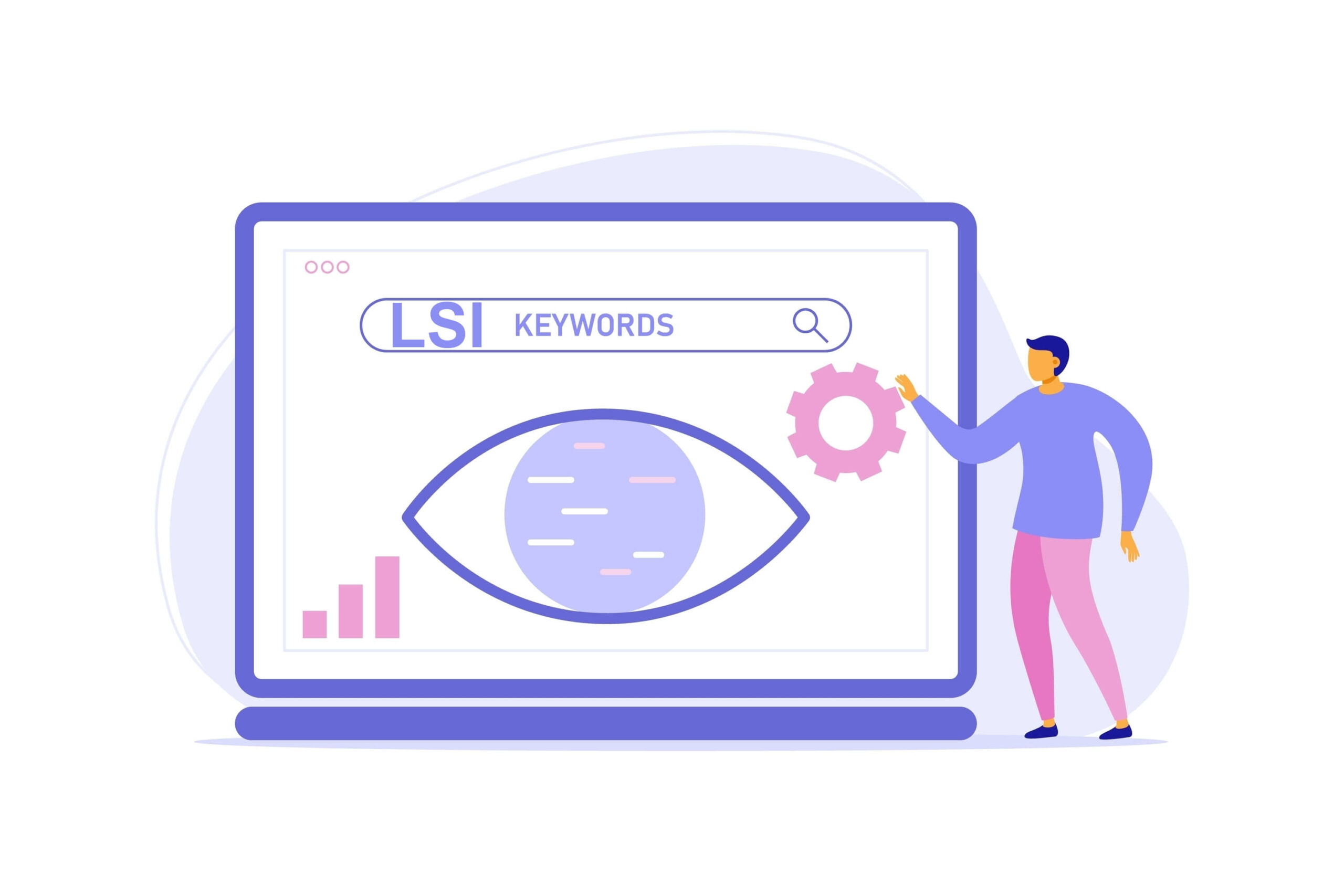
When did LSI keywords become relevant?
This update marked a major shift in how Google processed search queries. Instead of relying solely on exact-match keywords, Google began to consider context and synonyms, allowing the algorithm to better interpret the meaning of a page. Rather than simply counting keyword frequency, the search engine could now analyze the content as a whole, offering a more comprehensive view of the page’s topic. This development dramatically changed how search results were delivered, leading to a more sophisticated and context-aware system.
To understand how this change impacted SEO, it’s essential to explore the role of LSI keywords and their relationship to modern search engine optimization strategies.
The Impact of LSI keywords on SEO
In the early days, Google’s crawlers, or “spiders,” would traverse the web by moving from one link to another, scanning websites and analyzing the keywords on each page to determine its topic. For instance, if a blog post was titled “21 Tips For Effective Email List Segmentation,” Google would examine key areas of the page, such as:
- The title tag
- The main content
- Image alt texts
- H1, H2, and H3 headers, among others
However, after the introduction of the LSI (Latent Semantic Indexing) update, Google’s crawling approach underwent significant changes. This update allowed for several improvements in SEO, as the search engine started focusing on the context and meaning behind keywords, rather than just their frequency. This shift enhanced how Google understands and ranks content, considering related terms and concepts to better match search intent.
Google understands pages better
After the LSI update, Google began to go beyond just scanning for the main keyword on a webpage. It also looks for a range of related terms or LSI keywords that help to define the content’s overall topic. For example, if your page is about email list segmentation, Google might also search for associated terms like “email campaign,” “MailChimp,” “audience,” “subscribers,” and “email tools.”
This shift means Google no longer only focuses on repeating a specific keyword, but instead uses LSI keywords to gain a deeper understanding of the content. By incorporating these semantically related keywords, Google can better determine the subject matter of the page, enhancing its ability to match relevant search queries with more precise results. This deeper contextual understanding, powered by LSI keywords, allows Google to assess the content much more effectively.
Google reads pages contextually
Google’s algorithm has evolved to better understand page content in a way that mirrors how a human would interpret it. It now categorizes keywords based on context, making it capable of distinguishing between words with subtle differences. This is where the importance of LSI keywords comes in they help provide additional clarity about the meaning behind a phrase.
For example, Google can now distinguish between two similar terms based on their context:
- “Avoid shoehorning LSI keywords into your content if they aren’t relevant.”
- “Use a shoehorn to protect your shoes when putting them on.”
In the first instance, the term “shoehorn” is being used metaphorically, whereas in the second, it’s a literal reference to an item used to protect shoes. Thanks to LSI keywords, Google can recognize these nuances and ensure the right context is applied, improving search results and the relevance of the content.
Google can generate even more relevant results
A recent research paper from Google highlights the importance of identifying words that tend to appear together frequently. This helps Google’s bots better understand the main theme of the pages they scan. By using this technique, which involves LSI keywords, Google can categorize content more accurately, resulting in more relevant search results. When LSI keywords are properly used, they enhance the search engine’s ability to understand context and improve overall content relevance. This leads to a more refined and user-centric search experience.

Google can generate even more relevant results
Google incorporates the overall picture of your business
Google’s algorithm is also crafted to evaluate your business name, website, and industry, helping the search engine gain a comprehensive understanding of how each page on your site fits within the broader context of your business. This deeper understanding is crucial for ensuring that the content is correctly categorized and ranked.
With this in mind, it becomes clear why LSI keywords are now such a pivotal part of Google’s algorithm. The goal is to provide the most relevant and accurate results to users even for search terms that have never been queried before. This high standard of relevance and precision would not be achievable without the use of latent semantic indexing, which enables Google to grasp the context of content at a much more detailed level.
Tips When Using LSI Keywords for SEO
Pay Attention to User Experience
To create a quality article that ranks well on Google, it’s crucial to prioritize user experience, especially when incorporating LSI keywords. Overuse of LSI keywords can make the content sound repetitive and negatively impact the reader’s experience. To avoid this, it’s advisable to establish a balance in how often LSI keywords appear within your article.
One effective strategy is to determine an appropriate keyword ratio for each piece of content. This approach can help you avoid stuffing multiple LSI keywords into a single sentence, ensuring that the content remains natural and engaging while still being optimized for SEO.
Make Sure LSI Keywords Fit The Context
For an article to be effective, it should be easy to read, and maintaining a conversational tone is key to achieving this. When integrating LSI keywords, they must align with the overall context of the page. The last thing a reader wants is to encounter a sentence that feels disconnected or nonsensical due to the inclusion of irrelevant LSI keywords. It’s essential to ensure that each keyword fits naturally within the flow of the content and enhances its relevance to the topic.

Make Sure LSI Keywords Fit The Context
Final tips for using LSI keywords for SEO
Here are a few tips for incorporating related terms into your content to improve your SEO efforts:
- Avoid excessive use of synonyms.
- Write in a natural, conversational style. If something doesn’t sound like something you’d say in real life, it likely shouldn’t be in your article.
- Maintain a consistent ratio of related terms to the rest of your content (for example, one LSI keyword every 200-300 words).
Although following such a ratio isn’t a foolproof method for guaranteeing rankings for your LSI keywords, it provides a useful starting point.
Ultimately, your focus should always be on delivering clear, informative, and valuable content that addresses your readers’ needs. This not only improves their experience but also supports your business goals of converting visitors into customers.
By prioritizing value, you’ll naturally incorporate related keywords throughout your article, making their inclusion feel organic rather than forced.
Incorporating LSI Keywords into Your Content and SEO Strategy
Google has made impressive progress in artificial intelligence and machine learning, allowing it to better understand the context of content. The search engine now increasingly depends on LSI keywords to grasp the context of web pages. This makes it essential to understand how to effectively incorporate these keywords into your SEO and content strategies.
In this article, we’ve covered all the essential aspects of LSI keywords—what they are, why they’re important, how to find them, and how to leverage them to improve your online presence. Now, it’s time to apply this knowledge. Take an article or webpage on your site and enhance it with the LSI keyword strategies discussed here.
Are you already using LSI keywords in your content? Share your experience with us in the comments below!
LSI Keywords – Frequently Asked Questions
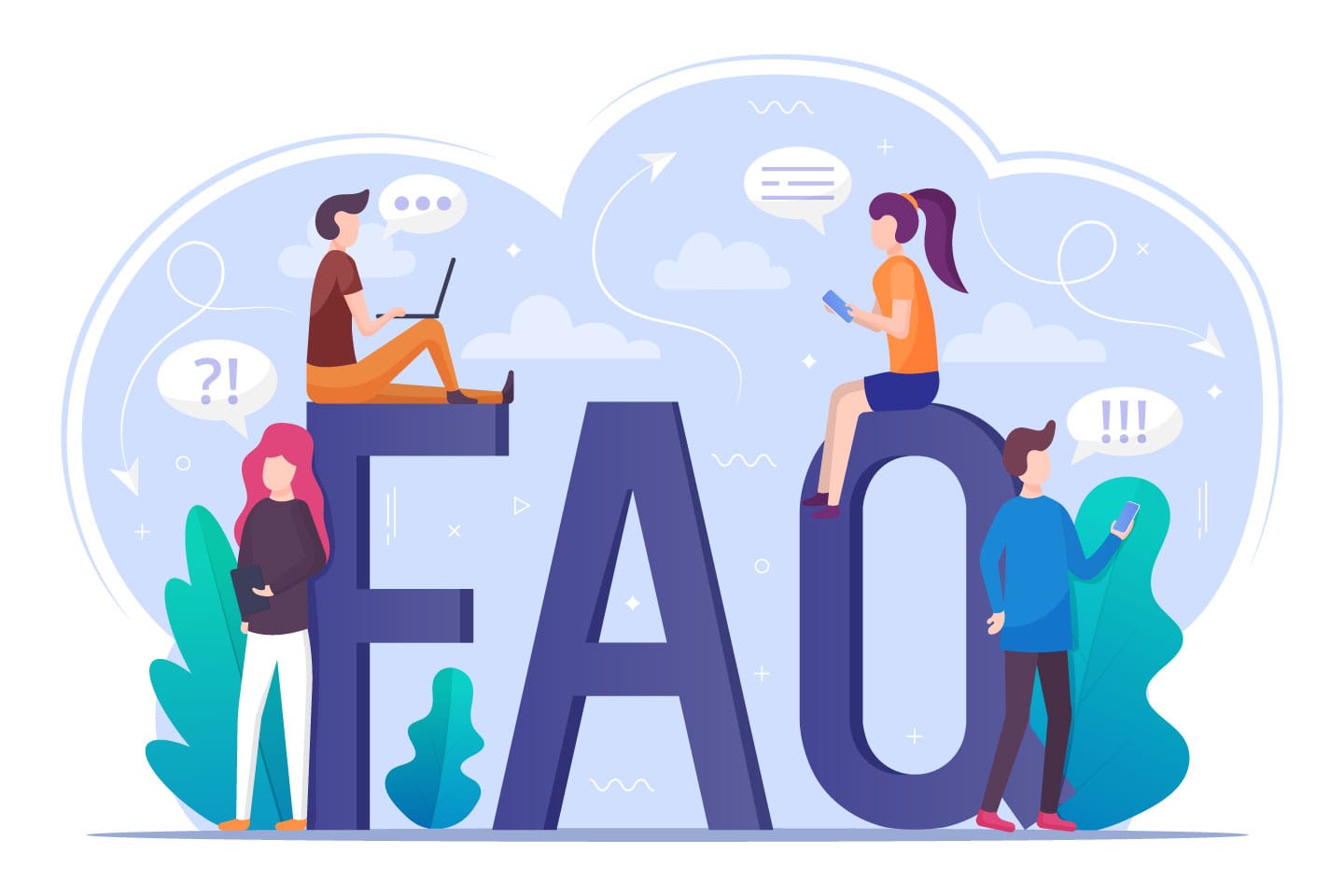
LSI Keywords – Frequently Asked Questions
How many LSI keywords should be included in your content?
There isn’t a fixed quantity of LSI keywords to include in your content. The key is to incorporate them in a way that feels natural, making sure not to overuse them. The focus should be on seamlessly blending these related terms into your text, ensuring they enhance the content’s relevance without disrupting readability or appearing forced.
Do LSI keywords and long-tail keywords refer to the same thing?
LSI keywords and long-tail keywords are not the same. LSI keywords are terms that are contextually linked to a primary keyword, helping search engines better understand the topic and context of the content. On the other hand, long-tail keywords are more detailed phrases, typically longer, and are designed to target specific, often niche, audiences. While LSI keywords focus on related concepts, long-tail keywords focus on highly specific search queries that are less competitive but more targeted.
Are LSI keywords capable of boosting my website’s search engine rankings?
By integrating LSI keywords into your content, you can enhance how search engines interpret the context of your page, ultimately boosting your website’s visibility and ranking on search engine results pages (SERPs). These keywords help search engines understand the broader topic surrounding your primary keyword, allowing for more accurate categorization and improved relevancy in search results.
Conclusion
Using LSI Keywords effectively can greatly enhance your content’s SEO performance, helping it reach and engage a wider audience. OctopusWriters is committed to crafting optimized content that naturally incorporates these keywords, ensuring your material aligns with search engine preferences while remaining valuable and relevant to readers. Let us help you strengthen your content strategy with expertly written, LSI-rich pieces designed to boost visibility and resonate with your target audience.

